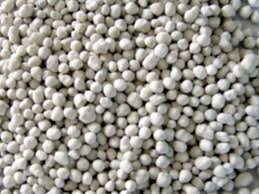
Дек . 17, 2024 19:07 Back to list
Fertilizer Formulation NPK 20-10-30 for Enhanced Plant Growth and Nutrition
Understanding NPK Fertilizers The Role of 20-10-30 Formulation
Fertilization is a cornerstone of modern agriculture, helping to optimize crop yields and enhance the health of plants. Among the various types of fertilizers available, NPK fertilizers have gained immense popularity. NPK stands for Nitrogen (N), Phosphorus (P), and Potassium (K), three essential macronutrients crucial for plant growth. Each of these nutrients plays a unique role in plant development, and the formulation of 20-10-30 has specific implications for agricultural practices.
The Significance of Each Nutrient
1. Nitrogen (N) As the first number in the NPK ratio (20 in 20-10-30), nitrogen is vital for plant growth. It is a key component of amino acids, which are the building blocks of proteins. Nitrogen contributes to vigorous vegetative growth, enabling plants to produce lush foliage. A greater nitrogen availability promotes the development of chlorophyll, enhancing photosynthesis and, consequently, the plant’s overall health.
2. Phosphorus (P) The second number in the ratio (10) represents phosphorus, another crucial nutrient. Phosphorus plays a pivotal role in energy transfer within the plant, particularly in the formation of ATP (adenosine triphosphate). This nutrient is essential for root development and the maturation of plants, ensuring that they can absorb water and nutrients efficiently. Adequate phosphorus levels also contribute to flowering and fruiting processes, making it critical for crop yield.
3. Potassium (K) The last number in the formulation (30) indicates the amount of potassium, which is integral to several physiological processes in plants. Potassium helps regulate water use and is vital for the synthesis of proteins and starches. It also strengthens plant cell walls, enhances disease resistance, and improves the overall quality of fruits and vegetables. Therefore, a high potassium concentration can lead to better yields and superior crop quality.
The Benefits of 20-10-30 Fertilizer
npk 20 10 30

The specific NPK formulation of 20-10-30 indicates a fertilizer that is particularly high in potassium. This makes it an excellent choice for crops that require significant potassium for optimal growth. For instance, fruits, vegetables, and flowering plants typically benefit from a higher potassium content, as it promotes fruit development and enhances flavor and size.
Using a 20-10-30 fertilizer can lead to several benefits
- Enhanced Crop Yield The balanced supply of nutrients ensures that plants can achieve maximum growth potential, leading to increased yields. - Improved Quality Higher potassium levels contribute to better quality produce, including taste, nutritional value, and shelf life. - Disease Resistance Crops treated with potassium-rich fertilizers often exhibit improved resistance to diseases and adverse environmental conditions. - Optimized Growth Stages The formulation supports various stages of plant development, from vigorous growth to robust fruit and flower production.
Application Considerations
While 20-10-30 fertilizer offers numerous benefits, it is essential to apply it correctly to avoid potential nutrient imbalances in the soil. Soil tests are recommended before application to determine existing nutrient levels and ensure that the right amount of fertilizer is used. Timing is also crucial; applying fertilizer during the active growing season can maximize its effectiveness.
Conclusion
In summary, the 20-10-30 NPK fertilizer formulation serves as a powerful tool for farmers aiming to optimize their crop yields and enhance the quality of their produce. By understanding the roles of nitrogen, phosphorus, and potassium, agriculturalists can make informed decisions about fertilizer use, promoting sustainable agricultural practices that support both plant health and environmental stewardship. As the agricultural landscape continues to evolve, the importance of targeted fertilization strategies like the 20-10-30 formulation will remain critical in feeding the growing global population.
-
High-Quality NPK Fertilizer Raw Material Manufacturer & Supplier Trusted Factory Exporter
NewsJul.08,2025
-
Organic 20-20-20 Plant Fertilizer Supplier Premium Organic Fertilizer Manufacturer
NewsJul.08,2025
-
Ammonium Sulfate Fertilizer Market - Leading Manufacturer, Supplier & Factory Solutions
NewsJul.08,2025
-
Premium Water Soluble Fertilizer 20-20-20 Reliable Manufacturer & Competitive Prices
NewsJul.07,2025
-
10-52-10 Fertilizer Supplier – Premium NPK Compound & Granular Fertilizers for Crop Growth
NewsJul.07,2025
-
Best Blueberry Organic Fertilizer - Premium Factory & Supplier Boost Your Blueberry Yield
NewsJul.07,2025
